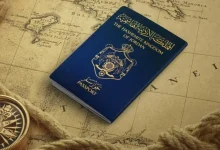The term “scorched earth policy” refers to a military strategy that involves destroying anything that might be useful to the enemy while advancing through or withdrawing from an area. This tactic aims to deprive the opposing forces of resources such as food, infrastructure, and other supplies, thereby weakening their ability to continue fighting. The scorched earth policy has been employed throughout history in various contexts, from ancient warfare to modern conflicts.
Historical Background
The concept of scorched earth warfare can be traced back to ancient civilizations. For instance, during the Roman Empire, military commanders would sometimes destroy crops and villages to prevent enemy forces from obtaining supplies. Similarly, in medieval Europe, retreating armies would often burn the land to hinder the progress of pursuing foes.
One of the earliest recorded uses of a scorched earth strategy in a more organized manner was during the Napoleonic Wars. In 1812, as Napoleon’s Grande Armée invaded Russia, the Russian military adopted a scorched earth policy. They burned crops, destroyed infrastructure, and abandoned cities, leaving little for the French army to exploit. This strategy, combined with the harsh Russian winter, contributed significantly to Napoleon’s disastrous retreat.
Key Examples in History
1. The American Civil War (1861-1865)
One of the most famous uses of the scorched earth policy in American history was General William Tecumseh Sherman’s “March to the Sea” during the American Civil War. Sherman’s Union forces moved from Atlanta to Savannah, Georgia, systematically destroying railroads, factories, and other resources that could aid the Confederacy. This campaign not only aimed to cripple the Confederate war effort but also intended to demoralize the Southern population.
2. World War I (1914-1918)
During World War I, the scorched earth policy was notably used by the German Army during their retreat from Belgium and northern France in 1917. As the German forces withdrew, they destroyed infrastructure and resources to hinder the advancing Allied troops. The devastation left behind had a significant impact on the local population and economy.
3. World War II (1939-1945)
In World War II, the scorched earth policy was employed by various forces. In the Soviet Union, the retreating Red Army followed a scorched earth policy to delay the advancing German forces. Cities were evacuated, and resources were destroyed to prevent them from falling into German hands. This policy was also used by the Germans in their retreat from the Soviet Union and other occupied territories.
4. The Vietnam War (1955-1975)
During the Vietnam War, the U.S. military used a form of scorched earth policy known as “Operation Ranch Hand,” which involved the widespread use of herbicides like Agent Orange. The goal was to defoliate the dense jungle, depriving the Viet Cong of cover and food sources. The long-term environmental and health impacts of this strategy have been substantial and controversial.
Effects and Consequences
The scorched earth policy can have severe and far-reaching consequences. While it can be effective in temporarily hindering an enemy’s progress, it often results in significant civilian suffering. Destruction of infrastructure, homes, and agricultural land can lead to long-term economic difficulties and displacement of populations. Moreover, the environmental impact of such tactics can be profound, leading to soil degradation, loss of biodiversity, and long-lasting damage to ecosystems.
In addition to the immediate effects on the enemy, the scorched earth policy can also have political and social repercussions. It can contribute to the escalation of conflict and increase animosity between warring parties. In many cases, the destruction wrought by this strategy can fuel further resistance and prolong the conflict.
Ethical Considerations
The ethical implications of the scorched earth policy are complex. While it is a legitimate military tactic under certain circumstances, its use raises significant moral questions. The deliberate destruction of civilian resources and infrastructure often violates principles of distinction and proportionality in warfare. International humanitarian law seeks to protect civilian populations and infrastructure, and the indiscriminate nature of scorched earth tactics can be seen as a violation of these principles.
In modern times, the international community has increasingly recognized the need to minimize civilian suffering in conflicts. The use of scorched earth tactics is often criticized and may be subject to legal scrutiny under international law. Efforts to adhere to humanitarian principles and seek alternatives to such destructive strategies reflect a growing commitment to ethical conduct in warfare.
Conclusion
The scorched earth policy represents a significant aspect of military strategy with a long history of use across various conflicts. While it can achieve short-term military objectives, its broader impacts on civilian populations, economies, and the environment underscore the importance of considering ethical and humanitarian concerns. As warfare continues to evolve, the lessons learned from historical applications of the scorched earth policy inform ongoing discussions about the conduct of armed conflicts and the pursuit of more humane approaches to warfare.

